|
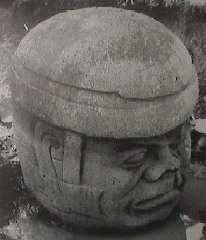 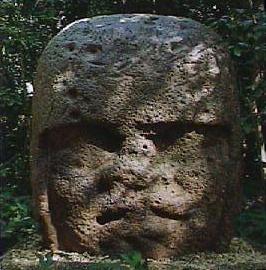 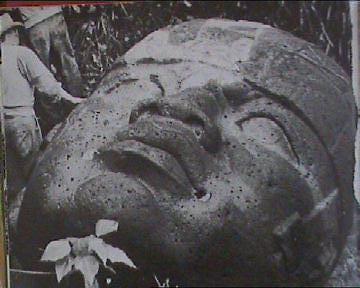
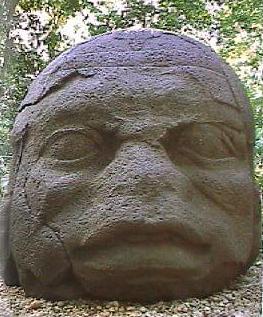

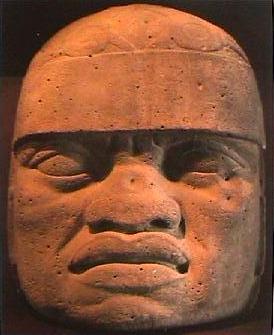
The
huge proportions of the heads suggests that they (The people represented
by the heads) were important people,
and their association with the Olmec culture at around (800-600 BC)
places them long before the Maya, Inca or Columbus's arrival in America.
The stone heads have been found at the three most significant
Olmecs sites in Mexico (La Venta, San Lorenzo and Tres Zapotez).
They were carved from huge basalt
boulders, some quarried in the Tuxtlas Mountains; some from the
basalt of Cerro Cintepec; others from basalt found on San Martin
Volcano.
It has long been
suggested that the stone heads represent warriors or chieftain
leaders, or perhaps a ruling dynasty. The clear prevalence of
Negroid (and oriental) facial features on the stone heads has been
said to be evidence of a 'fusion' of African and Pre-Columbian American races.
Other evidence ranges from Linguistics, Plant Geography, Skeletons,
Terracotta figures and even North African 'Tifinag'
inscriptions on the Virgin Islands
(3).
(An
African Presence in Pre-Columbian America)
Another interesting theory has emerged recently
which suggests that the helmeted figures
represent
famous Ball-court players. While we are more familiar with the ancient
ball courts of the Aztec and Mayans, the history behind those games
starts in the older culture of the Olmecs, as seen in their ceremonial
ball courts. (4) It is reasonably proposed,
on the back of this theory that the giant stone heads
look the way they do (with flattened/broken noses and fearsome
grimaces) because they reflect an aggressive, full contact sport.
(2)
The La Venta heads showed
several similarities to the Tres Zapotes heads, and it emerged
through archaeology that they dominated the ceremonial plaza, a feature which
suggests that they were in some way 'revered'. Four heads were
found at La Venta, all of them faced the Atlantic, and the
largest at 9ft high had its domed top flattened so that it could
function as an altar. A speaking tube was found going in at the
ear and out at the mouth; a possible
oracle or talking god. Radio carbon dates from the site were
published in 1957 and they give an average reading of 814 BC +/-
134 yrs. These figures were among the oldest at the La
Venta site.
La
Venta was not alone in its depiction of Negroid faces in
stone. Apart from the four found there, two were excavated in
Tres Zapotes and a further five at
San Lorenzo in Vera Cruz, one
of which, the largest known, is nine feet, four inches high, and
is estimated to weigh around 40 tons. (3)
The La Venta heads are thought
to have been carved by 700 BCE, but possibly as early as 850
BCE, while the San Lorenzo heads are credited to an earlier
period. The colossal heads can measure up to 9 ft 4 in. in
height and weigh several tons. The sheer size of the stones
causes a great deal of speculation on how the Olmecs were able
to move them. The major basalt quarry for the colossal heads at
La Venta was found at Cerro Cintepec in the Tuxtla Mountains,
over 80 km away. (1)
Images of the La Venta
Heads
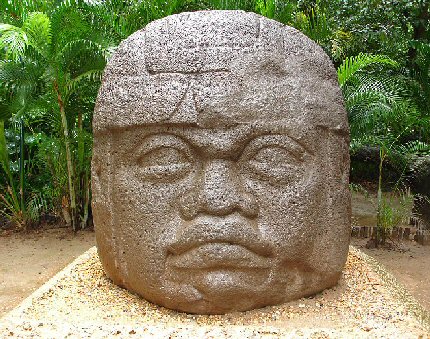
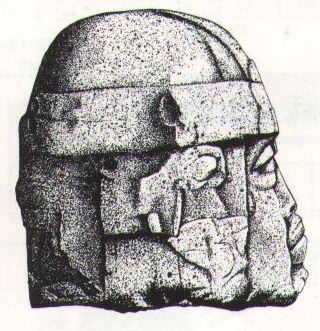
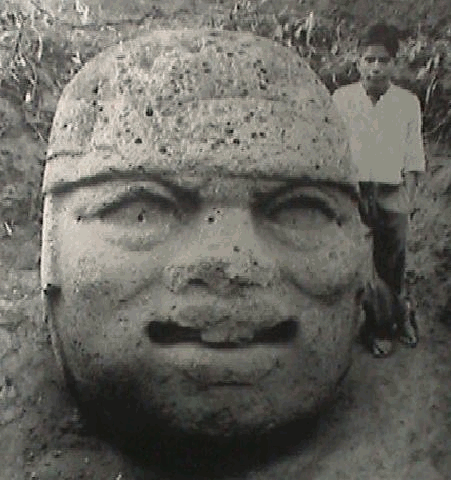

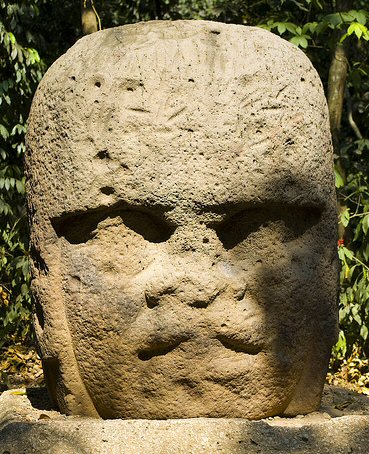

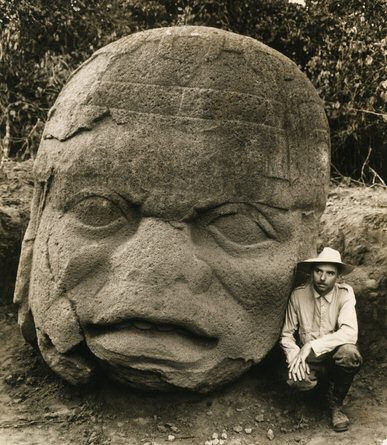

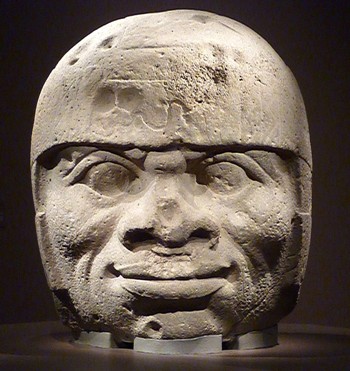
La Venta Stone Head No 9.
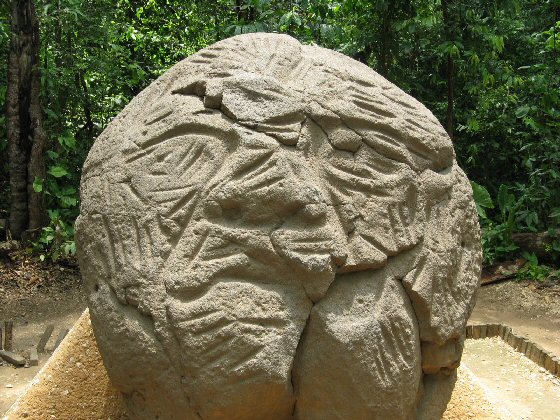
This unfinished stone head from La
Venta shows the way the stones were carved from round balls.
(More about La Venta)
The first rumours of large stone-heads in
Tres Zapotes came from as early as 1858, but it was in 1938 that Dr.
Stirling uncovered the first head, which was made from a single piece of
basalt rock resting on a prepared foundation of unworked slabs of stone.
He said of it that it was:
'...unique amongst aboriginal
American sculptures, it is remarkable for its realistic treatment. The
features are bold and it is amazingly negroid in character'.
(3)
The head was found at least 10 miles from the
source of the stone and a long slab of stone which was found at the same
site yielded a precise date of Nov 4th. 291 BC. As digging increased in
south America other larger heads and earlier heads were found at sites
such as La Venta, which began to reveal a
chapter of history in the pre-Columbian Gulf of Mexico that was almost
lost to us.
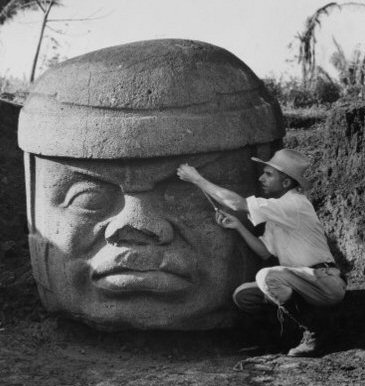
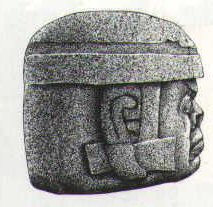
Monument A: Height 1.47m (4.82 ft). Carved from a block of
Basalt. Current location, Community museum, Veracruz.

Monument F: Currently on Display, Labelled 'El Negro' in the
Tuxteco Museum, Santiago Tuxtla, Veracruz.


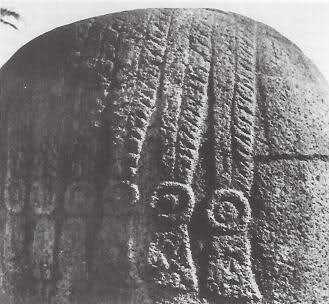
Monument Q -
Height 1.47m (4.82 ft). Carved from a distinctive porphyritic basalt and
weighing over eight tons, this was the second colossal
head to be discovered at Tres Zapotes. Current location
Santiago Tuxtla Museum, Veracruz.
Image (Right): The rear of Monument Q showing
Ethiopian style braided hair. This is one of the strongest arguments
in favour of these monuments representing people of African origin.
Ten colossal stone
heads representing heads of past and present
rulers have been found at San Lorenzo. Evidence
suggests that these heads were plastered and
painted in bright colours. They were arranged in
ensembles and set in a plaza paved with red sand
and yellow gravel. Sarcophagus-shaped thrones
linked living kings with their ancestors.
(5)


Monument 1 : This head dates from 1,200 to 900
B.C. and is 2.9 metres high and 2.1 metres wide. Current
location, Museo de Antropolog�a de
Xalapa in Xalapa, Veracruz.
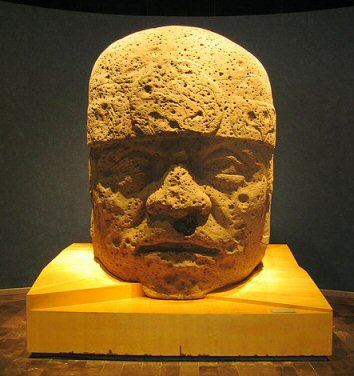

Monument 2:
2.69m (8.82 ft) tall. Current location, National Museum of
anthropology, Mexico city.

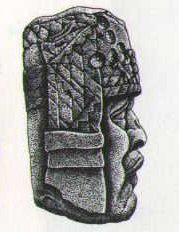
Monument 3 : 1.78m (5.84 ft) tall. Current location, Jalapa
Museum of Anthropology.

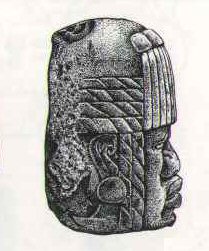
Monument 4:
Height 1.78m (5.84 ft). Current location, Japala
Museum of Anthropology.

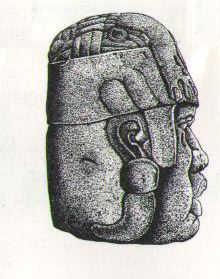
Monument 5:
1.86m (6.1 ft) high. current location, Jalapa Museum of
Anthropology.
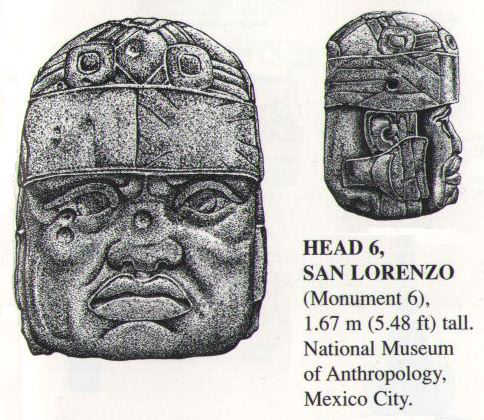

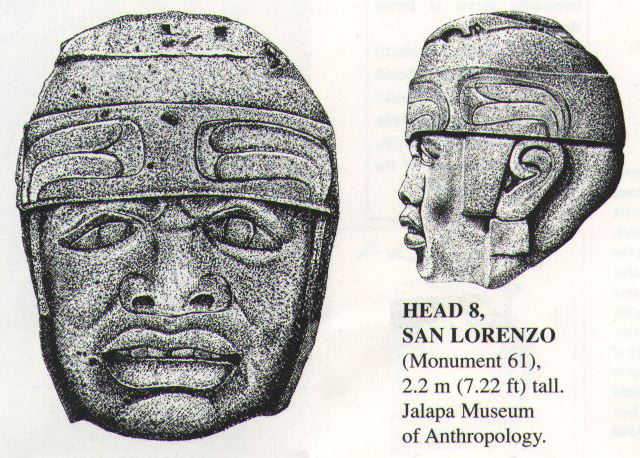
Monument 61: Height 2.2m (7.22 ft). Current location, Jalapa Museum of
Anthropology.
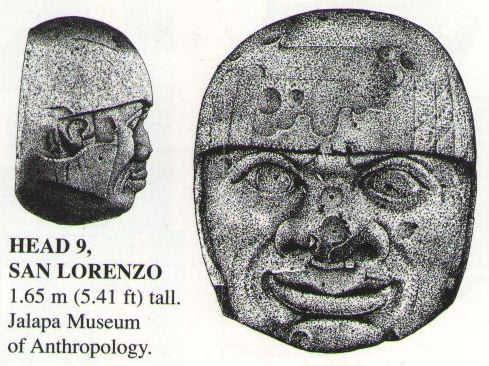

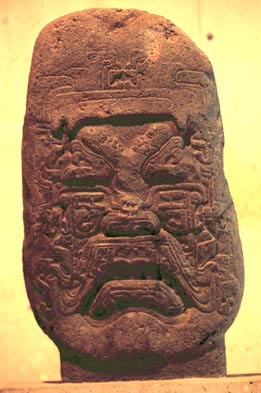
Also from San Lorenz, this unusual Stela-Head. Current location, Jalapa
Museum.



(An
African presence in Pre-Columbian America)
(The Guatemalan
Stone Heads)
(The
Argentinean Stone Head)
(The Costa Rica
Stone Balls)
(Top-50 Stones)
(The Olmecs)
(Mexico
Homepage)
(Pre-Columbian
Americas Homepage) |








































